Digital technologies will penetrate various areas of management going forward such as building governance, optimizing operating models and developing new businesses. However, in order to make this successful in a true sense, a process to define the use of digital technology that is appropriate for the company will become indispensable. It can be said that this process is the same as establishing a company.
So, how will the relationships between companies, which have started to focus on essentials such as their raison d’etre and the purposes of their business, and their partner consulting firms change? As the “Pilot” of Digital Management, Masayuki Chatani and Tim Denley of KPMG Ignition Tokyo (KIT) discussed the outlook for this theme with Go Matsumoto, Partner at KPMG Consulting.
Contents
- To Resolve Companies’ Challenges by Integrating Science and Art
- Attitudes of Companies toward Digitalization Revealed by COVID-19
- What Is Needed Now Is to Develop Scientific Literacy
- CDOs Who Are Indispensable to Digital Management and Their Ability to Manage Technical Debt
- Prescription for “Syndrome to Solve Anything Using AI”
- How Will Technology Be Incorporated in the World of Consulting?
To Resolve Companies’ Challenges by Integrating Science and Art
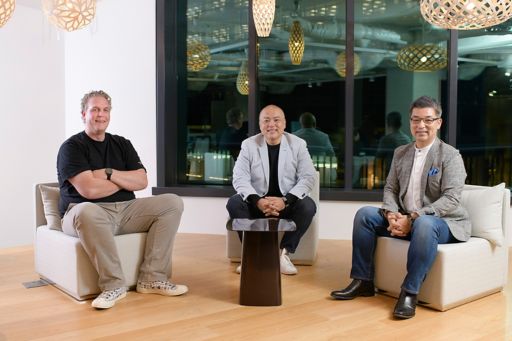
(Masayuki Chatani, Representative Director & CEO of KPMG Ignition Tokyo and CDO of KPMG Japan (right); Go Matsumoto, Partner, Head of Management Consulting at KPMG Japan (center); Tim Denley, Board Member & Partner of KPMG Ignition Tokyo (left)) *Professional affiliation and official position in the article are at the time of publication.
Chatani: I think that consulting services will be individualized according to the challenges faced by each company, but how do you think consulting will change with the promotion of digitalization?
Denley: Let’s start by putting the current situation in order. The reason why companies ask for advisory services from major consulting firms is that they think that consulting firms can resolve their issues, as they have cross-sectionally resolved similar issues at various companies, to be precise, their competitors, in the past. Therefore, consulting firms have been responding to these needs by templating past experiences and deliverables and offering them, saying “please use these elements as a reference, as we have resolved similar issues in the past.”
In fact, when I started working as a consultant, I was given a pile of relevant documents for each project. I filed and compiled them myself so that these past materials can be searched for and “used by combining this and that” when similar projects appeared.
But as there is a limit in handling new cases based on the filing scheme and memory, this area will gradually be digitalized and change. By creating a database of these materials and organizing them by establishing rules for keywords, it will be possible to search them more quickly, accurately and optimally.
Furthermore, if we can assetize all the past materials in the organization, it will be possible to reference more appropriate past cases which we do not know. The need for this type of knowledge management is increasing. Looking at strategy-type consulting firms, it seems that companies with well-organized knowledge management are successful.
It appears that these companies were able to create a great impact by shifting their method of investing in outstanding top management to knowledge management, curating all knowledge and information collected within the company and putting together a team that assists in promptly finding necessary information.
Chatani If knowledge inside the brains of professionals can be processed with machines, it will surely be easier to process it with computers. How a company can guide the entire organization to this state will probably affect its future.
Denley: Two factors—to be able to mobilize wisdom and knowledge with machines and to be able to utilize human capabilities more flexibly—are very important, and work that requires people, I think, will remain until the end even if digitalization is promoted.
Chatani: So, how are companies trying to promote digitalization now and how is the consulting business trying to support them? Let’s talk about this more in-depth with Mr. Go Matsumoto, Partner and Head of Management Consulting at KPMG Consulting.
Attitudes of Companies toward Digitalization Revealed by COVID-19
Chatani: Has there been any change in the consulting business before and after the COVID-19 issue?
Matsumoto: I think the “hemostatic (blood coagulation) business” changed the most. There are increasing needs for transformation in cyber security and the remote office environment, which is clearly lagging behind foreign countries. However, this is not resolving the essential issues faced by companies but rather sparking up discussions on how not to stop business. They ask us to give advice “so that we can implement remote work for the time being” and correspondingly on how to change personnel evaluation or how to promote job-oriented working styles. This itself is a good thing but I am concerned that it may lead to superficial discussions.
In the meantime, even if we propose having fundamental discussions about “optimizing business toward the post-COVID-19 world” to respond to management risks such as the fragmentation of the supply chain due the COVID-19 crisis, there is still a hesitant atmosphere. This means that the focus of attention is now on agendas that can be approved as quickly as possible.
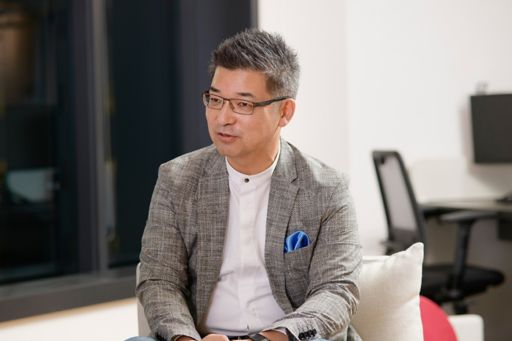
However, manager-level personnel at the frontline have a strong sense of crisis and are trying to advance fundamental discussions. But when it comes to the stage of decision-making at the company, they tend to put a stop to it. Looking at this situation, there may not be many companies that are taking the COVID-19 crisis as an opportunity to make some kind of transformation in a real sense.
Denley: This means that the sense of crisis at the frontline has come to a halt, doesn’t it?
Matsumoto: Yes. On the other hand, sales of consumer goods and retail businesses in some areas are growing even during the COVID-19 crisis. In such areas, moves to review the user experience (UX) on a full scale are also starting.
What Is Needed Now Is to Develop Scientific Literacy
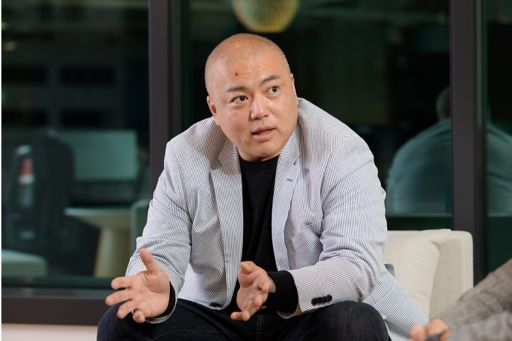
Matsumoto: In recent years, data analysis has become widely disseminated and if we look around the world, there are many cases where the government and the private sector are working together to create infrastructure even if the technology specifications themselves are not that high, like in Estonia.
In Japan, however, I notice that it has not been successfully put to practical use yet. There were views that data-driven management and administrative reforms would be triggered by the COVID-19 crisis, but there are many bottle necks and whether they will truly be realized is hard to say. What do you two think about this?
Chatani: The fact that our overall scientific literacy is not so high, I think, is the cause of various obstacles. Priorities can be determined if things are done more scientifically and logically, but there is a tendency to include tradition and emotion in discussions and, I think, this is preventing logical and rational decision-making.
Denley: There may be a gap between reality and the perception of how impressed we are about “the advancement of technology.” I also think that the path to achieve the top of what we are aiming for may be wavering.
For instance, we didn’t know “how good an iPhone, which has no keyboard or button, is” until we actually saw, touched and experienced it. It may be that business owners are indeed in a state where they have not yet seen the actual iPhone, in regard to their use of digital management and technology.
Matsumoto: I guess this means that it is necessary to set an appropriate scientific goal in management as well. Technology will naturally play a major role in this and I hope that the climate to focus on applicability in this process will be enhanced.
On the other hand, when we think about how technology is being used, there were many experiences where speed increased incrementally but I feel that technology has not been used exponentially.
Unless a blown-away concept such as quantum computing is put to practical use going forward, for instance, I am always concerned about what will become of business application. What do you think about this?
Denley: Documents that had been hand-written were replaced by word processors and then personal computers and the Internet, evolving one step at a time. In recent years, 5G, edge computing and data analysis have appeared but we need to seize them by connecting them like “multiplication.” However, I think that the awareness and strength of organizations to “multiply” them without closing them by capturing each of them as a “buzzword” have not developed among Japanese companies.
Matsumoto: Do you mean organizational strength?
Denley: Yes, I think it is organizational strength. For example, in the manufacturing industry, there are many cases where the IoT Division will talk with the frontline but the data obtained by the IoT Division are analyzed by another division. Because these two do not connect with each other, they tend to promote discussions separately. The fact that there is no CDO (Chief Digital Officer) is also an issue.
There are three types of CDOs—those who belong to the Marketing Division and oversee digital marketing, those whose role is similar to that of a CTO (Chief Technical Officer) and work under the CIO (Chief Information Officer), and those who work beside the president and think about how technology can be used cross-sectionally. I think that there are still only few of the third type of CDO in Japan. My impression is that this is why the idea to incorporate digital technology into management is low.
CDOs Who Are Indispensable to Digital Management and Their Ability to Manage Technical Debt
Matsumoto: Mr. Chatani is also the CDO of KPMG Japan. What kind of roles are now demanded of CDOs by companies?
Chatani: I think they are indeed required to drive DX (digital transformation) now. And what is equally important is their decision on how to build new technologies while letting go of technical debt that has built up until now.
This goes for human resources as well. Personnel must also change with digitalization, leaving aside the question of whether to employ new personnel or develop the target personnel by having them acquire necessary skill sets in digital technologies that will become generalized next.
In other words, it is an important role of CDOs to determine the concepts of the personnel structure, organizational system, and budget as well as investments so that the company can create and make use of next-generation digital platforms and solutions.
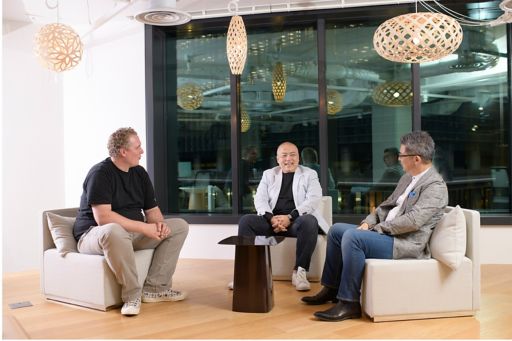
Denley: I think that, especially in Japan, it is necessary to understand and become conscious of the presence of technical debt. When we hear the term technical debt, we tend to think of it in a negative way as if we have debt in the technology sector. However, there are many companies that are not aware that they have “technical debt” in the first place.
Having a debt itself is not necessarily a bad thing but it is extremely important to be aware of it and control it. If they can’t do this, that’s another story. Controlling technical debt is a management matter and must be treated as part of governance. They do not see the technology-related portfolios within their company and have no path to confirm whether the technologies in the company “are good, are debts or should be used continuously going forward.”
Matsumoto: As for handling technical debt, there are overseas cases where it is processed as cost. I also hear cases where engineers that are involved in it are encouraged to change their jobs, as “they may be welcomed at other companies even though they do not fit in here anymore.”
In Japan, however, there is no mobility of human resources due to the lifetime employment system and the constitution of labor unions. It seems to have become the mission of companies to maintain employment by securing places where personnel who do not necessarily fit anymore can work. Will it be possible for Japanese companies to invest in new and profitable technologies while using their management resources in this way?
Chatani: As a reference, I would like to talk about when I was involved in “Play Station series” and there was a time when we crossed over the ratio of investment in technology. “Play Station” was originally a business focused on semiconductors, on top of which software was installed. Also, from the semiconductor development perspective, PS3 was an ambitious project that aimed to develop the CPU installed in the world's best supercomputer later.
From PS3, however, we placed importance on software and networks and rearranged our investment portfolio to focus our capital and human resources on them. This resulted in the manager in charge of semiconductors becoming the manager of software, which must have been difficult for him to accept...
Matsumoto: That’s very interesting. Do you think it is possible to maintain human resources with high needs by simply reeducating their skill sets?
Chatani: As semiconductor designs are carried out using software, I understand that it is not difficult for personnel who have knowledge of upstream semiconductors to understand downstream matters.
Denley: It is to find what is common between semiconductors and software and expand the possibilities that lie there. I think it will be important to have business owners that can do this properly and give instructions on “what should be done” going forward.
Chatani: In recent cases, in the process of on-premise to cloud migration and shifting from the seal stamping system to electronic signatures, I think it will be necessary to find such common points and advance to the next step.
Any time we try to actively change something, we cannot avoid thinking about how we can stop past customs. We cannot advance to the next step without sorting out “what the costs will be to transit to something new, what to leave behind and throw away and what to maintain and where to entrust it to.” Otherwise, everything will remain unchanged and everyone will start to suddenly panic when the time limit approaches.
Prescription for “Syndrome to Solve Anything Using AI”
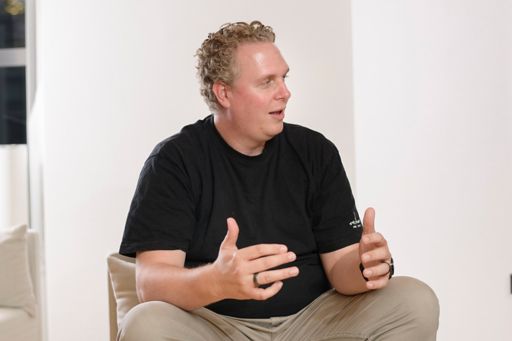
Matsumoto: Recently, I have been increasingly asked to respond to straight-forward questions from clients such as “how can we develop digital-native personnel?” and “can we do anything new using digital technology?” as well as “what is the benchmark? What are the cases at other companies?”. However, I don’t think this type of approach is appropriate to solve current essential problems. I think that Messrs. Chatani and Denley are also asked these questions. What do you think?
Chatani: There are not many people like that who come to KIT. But among those that come for consultation, there are many cases where mainly the management have developed a “syndrome to solve anything using AI” but are unclear about “what they want to do” and are troubling the next management team to “do something about it.”
When this happens, we must do a “self-search of the company” in many cases because AI cannot be created unless the essential part of “what this company means to society” is determined.
If someone “wants to become a singer,” that person can go through voice training and if a person “wants to become an athlete,” we can teach them the body movements but there is nothing we can do if we are told “I don’t know what I want to be”. This means that the ability to formulate proper questions is more important than resolving questions. A question has to be correct to get a correct answer.
Denley: To realize this, the idea of how to infuse the “power to open the eyes” in companies that are thinking in traditional and conventional ways will be required. The process consists of preparing elements that can be felt with a skin sensation such as prototypes and demos, communicating that “it can be done to this level!” and then integrating existing processes and systems with new technologies in the next step.
Matsumoto: In our division, there is the keyword “don’t let the clients submit RFPs (requests for proposal).” This is because there are many cases where the submission of an RFP means that while the client’s issue is clear, it often results in wrong approaches and conclusions. However, there are also many cases where nothing is accomplished and they “want to use up the budget because internal approval has been received.” This means that if they can contact us before the RFP is submitted, we will be able to offer work that will satisfy clients in a true sense.
Chatani: In many cases, we can make better proposals and provide satisfactory work if we can think by ourselves from scratch rather than having them give us requests.
How Will Technology Be Incorporated in the World of Consulting?
Denley: Based on our discussions so far, has anything come into view in terms of how digital technology will be incorporated into consulting and furthermore into corporate management?
Matsumoto: I was doing similar work when Lehman Brothers went bankrupt but what I feel is clearly different between that time and the COVID-19 crisis is the speed of rotation of the PDCA cycle. Of course, this is not only due to the impact of COVID-19 but it seems that there is a tendency to “try things tentatively” because it is becoming difficult to ensure probability even if measures are devised. Technologies and platforms that enable this are also appearing.
The rest is the ability to make judgements on which tools and solutions to use. While there is the issue of whether to choose things internally or entrust them to external partners, I think that the speed factor is clearly changing.
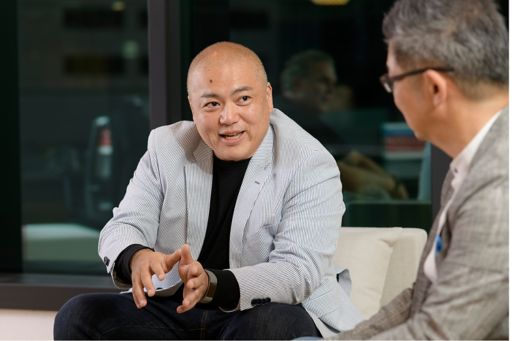
Chatani: In the case of the cloud, the environment to conduct trials at a low cost is being developed.
Matsumoto: Yes, the problem of “that can’t be tried easily because of the cost” until just recently does not need to be considered anymore. Initial investment costs have declined significantly and projects can be launched even without in-house technical know-how. This is because projects can be started even when the ROI (return on investment) is not clear at the beginning, as there are many companies that are creating gate review schemes including agility.
Chatani: So, do you think your business model will also change, Mr. Matsumoto?
Matsumoto: As mentioned earlier, the idea of being contacted before the RFP is submitted is important. I think it depends on the length of the relationship. This does not merely refer to the time-wise length of the relationship but also to the kind of density with a ray of light that leaves an impression. We hope to establish relationships where we can listen to their essential issues based on this connection.
Denley: You mean the kind of relationships where the clients think of us as someone that can resolve their problems, such as “we’re in deep trouble and we are contacting you because we thought that you could solve our problems.”
Matsumoto: That’s right. Until now, project work has been separated according to each phase with the providers sharing roles and handling the work they are good at. But when it comes to reconsidering the UX (user experience), it means that the process will be reestablished at the same time and this style of working by excessively sharing roles will not meet the needs of clients. We will therefore need a model to work in a consistent way. We will not be able to respond to their needs unless we have the ability to judge the development capability within our management consulting operation.
Meanwhile, the formation of operating models will also change because if we redefine the raison d’etre of the company when introducing AI, the organizational structure will change accordingly. I hope that we can design a business technology architecture that takes into account the use of external digital technology and the interoperation of data.
Follow us on KPMG Ignition Tokyo LinkedIn for the latest news.
Connect with us
- Find office locations kpmg.findOfficeLocations
- kpmg.emailUs
- Social media @ KPMG kpmg.socialMedia




